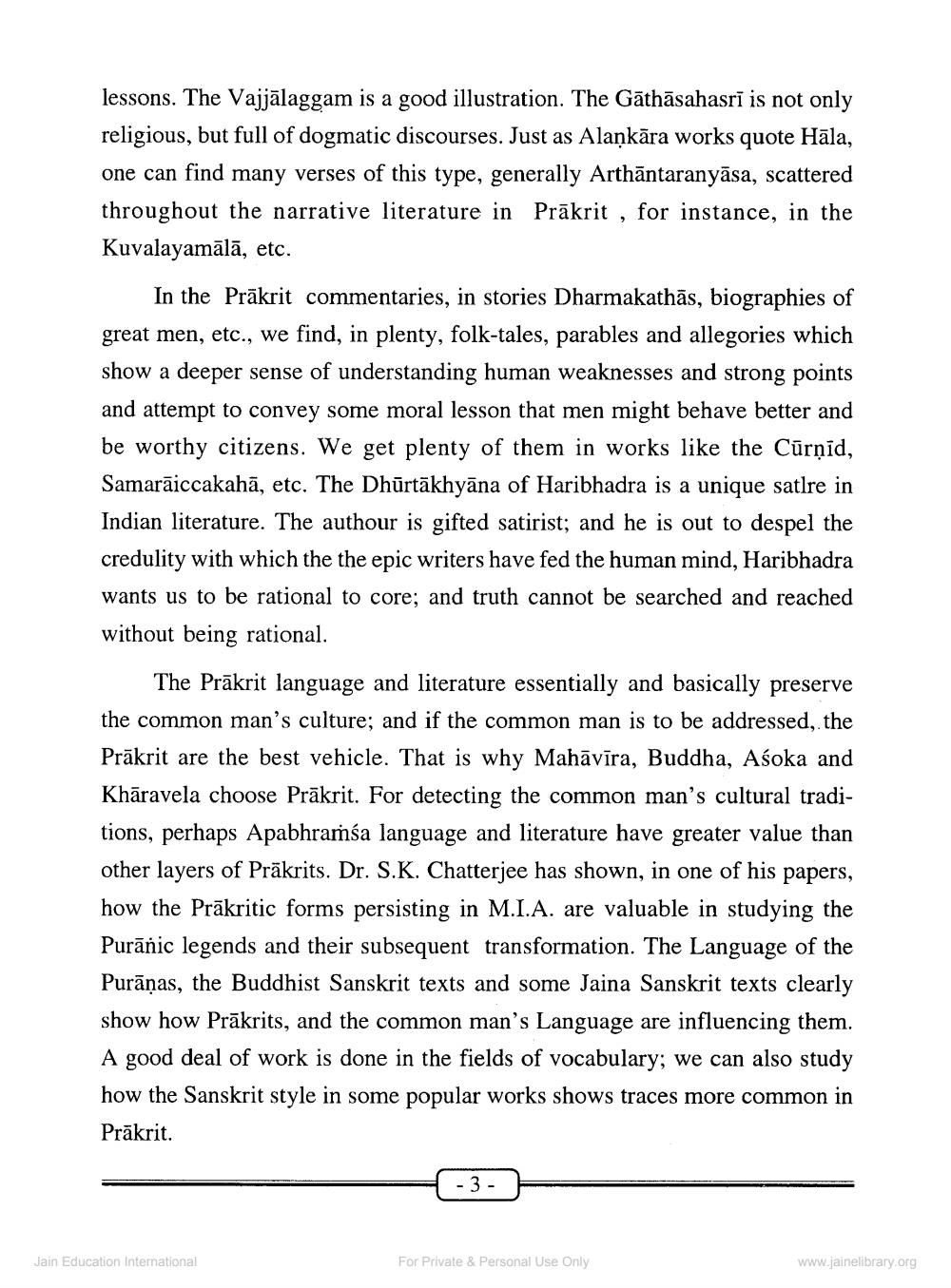________________
lessons. The Vajjalaggam is a good illustration. The Gāthāsahasrī is not only religious, but full of dogmatic discourses. Just as Alankara works quote Hāla, one can find many verses of this type, generally Arthāntaranyāsa, scattered throughout the narrative literature in Prakrit, for instance, in the Kuvalayamālā, etc.
In the Prakrit commentaries, in stories Dharmakathās, biographies of great men, etc., we find, in plenty, folk-tales, parables and allegories which show a deeper sense of understanding human weaknesses and strong points and attempt to convey some moral lesson that men might behave better and be worthy citizens. We get plenty of them in works like the Cūrṇid, Samaraiccakahā, etc. The Dhurtākhyāna of Haribhadra is a unique satlre in Indian literature. The authour is gifted satirist; and he is out to despel the credulity with which the the epic writers have fed the human mind, Haribhadra wants us to be rational to core; and truth cannot be searched and reached without being rational.
The Prakrit language and literature essentially and basically preserve the common man's culture; and if the common man is to be addressed, the Prakrit are the best vehicle. That is why Mahāvīra, Buddha, Aśoka and Khāravela choose Prakrit. For detecting the common man's cultural traditions, perhaps Apabhraṁśa language and literature have greater value than other layers of Prakrits. Dr. S.K. Chatterjee has shown, in one of his papers, how the Prakritic forms persisting in M.I.A. are valuable in studying the Puranic legends and their subsequent transformation. The Language of the Purāņas, the Buddhist Sanskrit texts and some Jaina Sanskrit texts clearly show how Prakrits, and the common man's Language are influencing them. A good deal of work is done in the fields of vocabulary; we can also study how the Sanskrit style in some popular works shows traces more common in Prakrit.
Jain Education International
-3
For Private & Personal Use Only
www.jainelibrary.org




